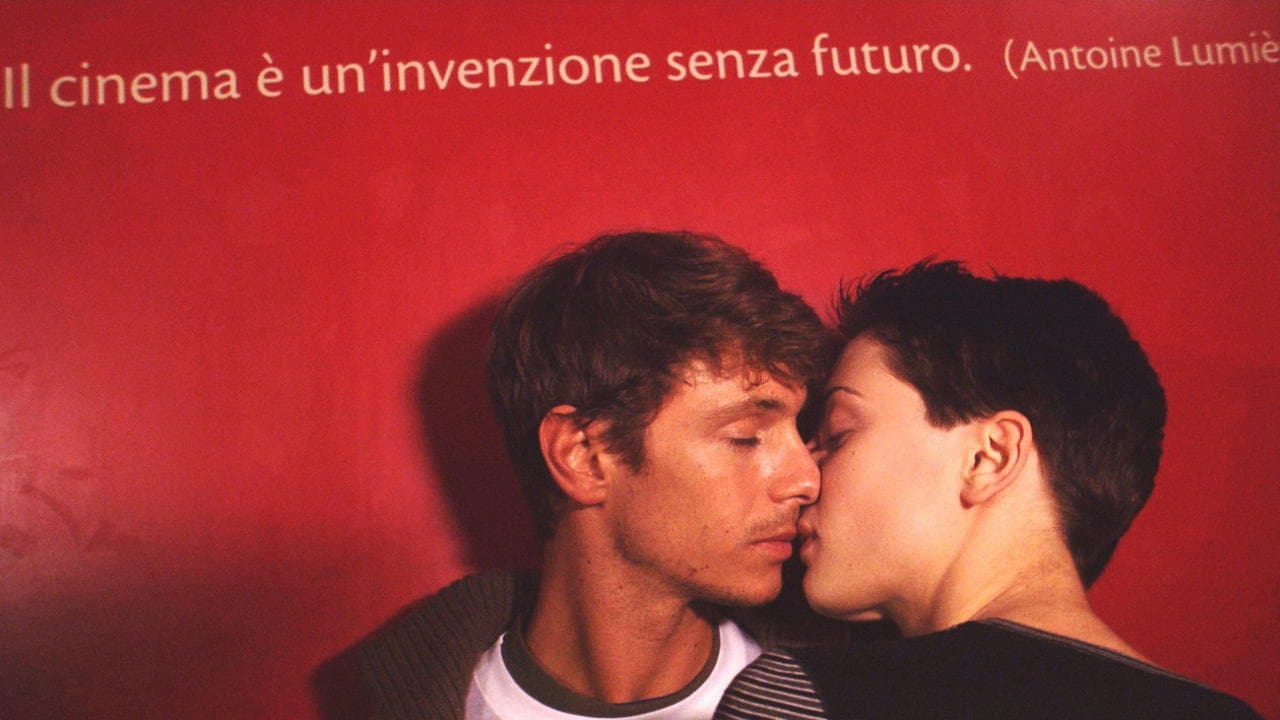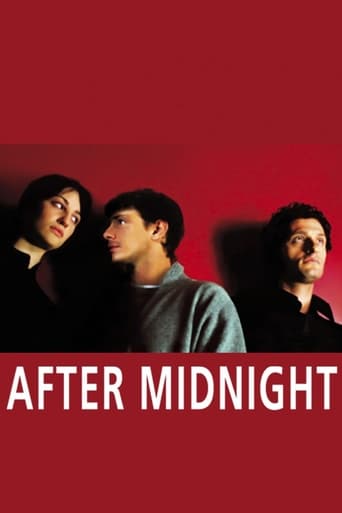



Who payed the critics
I cannot think of one single thing that I would change about this film. The acting is incomparable, the directing deft, and the writing poignantly brilliant.
View MoreThrough painfully honest and emotional moments, the movie becomes irresistibly relatable
View MoreThe movie really just wants to entertain people.
This is yet another valentine to movies and the part they play in people's lives, at once referential and innovative. It does however require a certain suspension of disbelief - is it, for example, feasible that a caretaker would (a) be allowed to live in the museum full time and (b) have access to all the expensive equipment housed there so that he can, in effect, run movies to his heart's content. Once we get round that we can relax and enjoy what is in effect a gentle, tender romance in which people get beaten up; it's contraries like this that make it interesting. Essentially it's a film about losers, four to be exact: A girl who works in a fast-food outlet with only vague dreams of improving her lot; her boyfriend who steals cars for a living and treats her as an object rather than a partner, yet, perversely doesn't want to lose her but will if the right man comes along; her roommate, a hairdresser, who fancies the car thief herself, and Martino, the caretaker of the museum, who lives in a world of his own and takes as a role model Buster Keaton. Martino loves the girl from afar but when she scalds her boss and the police are called she holes up in the museum and falls into a relationship with Martino. When the heat is off and she can leave she realizes that she loves both men, who ask her to choose between them. This is a quirky entry that definitely grows on you and benefits by featuring virtual unknowns in the lead roles. Well worth checking out and very probably a second look.
View MoreThis is a wonderfully inventive romantic comedy set primarily within the Mole Antonelliana, a fabulous 19th Century building in Turin that since 2000 has housed the Italian National Museum of Cinema.The love story is a triangular dilemma in which a young woman loves two men and cannot force herself to choose one over the other. Amanda (Francesca Inaudi in her film debut) is a fast food clerk whose life seems to be heading nowhere. Her boyfriend Angelo (Fabio Troiano) is a car thief and control freak who seems more closely bound to his trio of henchmen than to Amanda. Though handsome and charming in his way, he never stays the night and forgets about their dates.Then one evening Amanda urgently needs a place to stay and accidentally bumps into Martino (Giorgio Pasotti), a solitary cinephile who works and lives in the Museum, located near the burger joint where she works. He takes her in, and things begin to change for everybody.Martino hardly talks at all. For him life on the silver screen is reality, so he sees little point in social ties or even leaving the Museum, except for trips to the fast food place when Amanda's on duty. He hates the food but buys it anyway as a pretext to be close to her. He is so unobtrusive that she had never before noticed him, but for Martino, she is the dear if distant object of his total affection. He actually creates a film about the history of Turin, embedded within which are shots of Amanda taken from a distance.Buster Keaton is Martino's role model for conducting a relationship with a woman. The Keaton formula for success in love necessitates a series of struggles, pratfalls and temporary defeats ending in shy, glancing kisses and handholding. When circumstances dictate that Amanda stay in hiding at the Museum for several days, Martino proceeds to approach her in the Keaton manner. This isn't exactly Amanda's cup of tea. Their cavorting over the ensuing days is one of the more endearingly humorous sequences in recent cinema.Once Amanda is reunited with Angelo, he senses immediately that something has changed. He cleans up his romantic act, but his reforms come too late to neutralize Amanda's affection for Martino. Inspired by watching Buster Keaton take on a gigantic man to win the favors of the woman he loves, Martino comes to challenge Angelo. Priding himself on being 'principled,' Angelo proposes that, rather than him and his gang beating Martino to a pulp, the two lovers should instead let Amanda choose between them and abide by her decision. But she will not choose, leading to some amusingly awkward dates for the trio.The story is narrated by a sage fellow (Silvio Orlando, never seen) who treats the viewer almost as a godlike partner, joining him in enjoying the follies of these three earthlings. Actually it's four: I've left out Amanda's roommate, Barbara (Francesca Picozza, also making her film debut here), a beautician with horrid hair and makeup who lusts after Angelo and believes that love is always a zero sum game.All four principal roles are well acted. Distinctions in personalities of the characters are made vividly clear. Miss Inaudi is captivating. She is poised - confident, relaxed and natural - in her movements and speech, and has ivory skin, warm almond eyes, and a sweet, simple little smile that charms. But for me there's nothing quite as sexy as a broken looking nose on a woman (I think of Kristin Scott Thomas, for example), and Inaudi's marvelous shnozz looks like she took a tough blow sometime long ago, though most likely this feature of her anatomy is genetic.In fact, the most striking member of the cast is the Museum itself. Built between 1863 and 1889 as a Synagogue, it is one of Europe's largest masonry buildings. The City of Turin has owned the place since before the turn of the last century, and it was entirely remodeled in the late 90s so that the Cinema Museum could be relocated from the Palazzo Chiablese to these more dramatic quarters.The place has been designed to function something like the Guggenheim Museum in Manhattan, though it's much larger and more grand. The dominant feature of the building is a giant cupola. Now a glass walled elevator takes visitors high up into the cupola, from where they can descend, strolling on an inclined walkway that spirals downward past numerous displays on movie themes. The main floor houses a richly upholstered theater for larger screen presentations.The love triangle is, of course, too unstable to last, and it doesn't. Things do sort themselves out in the end, in a manner that, in the final scene, poetically entwines the boundaries of reality and cinema in the most visually lovely manner. This film reflects an inspired level of imagination on the part of Davide Ferrario, who wrote as well as directed. Its self-styled connections to great cinema from the past are not for a moment pretentious. This is a respectful homage, and, besides that, it's one terrific movie. (In Italian) My rating: 8.5/10 (A-). (Seen on 04/28/05). If you'd like to read more of my reviews, send me a message for directions to my websites.
View MoreThis film is a treat for all cinema lovers. This quirky comedy and love story about a modern Buster Keaton-like character takes place in the amazing Mole Museum of Cinematography in Torino, Italya place that is now on my list of places to visit. As the narrator informs us, this is story just as much about places as it is people. A sense of nostalgia weaves the film together with elements of classic silent film techniques, quirky slapstick comedy and expressionism. 3 different film formats are used in shooting this film. The combination of 35mm, digital video and 9.5mm make this film a feast for the eyes. Ferrario utilizes the ever-classic iris in and iris out transition effect as a delightful homage to Keaton and other classic filmmakers of the day. He cleverly draws parallels between the characters in the film and characters in the classic films by cross-cutting between clips of Keaton and a German expressionist film (i don't believe i can't remember which one) and the main characters Martino (Giorgio Pasotti) and Amanda (Francessa Inaudi). The unbalanced lines in the mise- en-scene give a sort of throw back to expressionism, which works well in representing the character of Amanda.Ferrario makes many different allusions that are fun to connect, such as Fitzgerald's "eyes of TJ Eckelburg, Fibonacci's numbers, and of course the works of Buster Keaton. In and out this film is just a joy to watch. Stylistic, yet simple, and if nothing else charming.
View MoreThe 2004 new movie by one of the most intriguing Italian directors. Despite of a low budget and a not-famous cast (except for the narrating voice), this movie is purely entertaining and involving: fascinating sequences inside the Turin's wonderful Mole, actual venue of the most important Italian cinematographic museum. Not-so-profound characters and dialogs, and sometimes a bit of inaccuracy in playing, but a sincere view in the struggle for love, solitude and boredom. Very nice editing with sequences of early cinema movie clips, especially by Buster Keaton.
View More